| Author |
Message |
    
Doug Kimball
Advanced Member
Username: doug11k
Post Number: 35
Registered: 12-2003
| | Posted on Tuesday, March 06, 2007 - 09:42 pm: | 




|
A friend recently sent photos of a an early Palmer stationary engine belonging to his friend. They are looking for any available information.
Engine is quite small & believed to be 1 1/2 hp. We don't understand the fuel system. I thought it might have been run on natural or producer gas. It has been suggested that it should have a surface evaporator/vaporizing chamber for gasoline. Others think it should have the Palmer check valve type mixer also for gasoline. The ignition system appears identical to later model Palmers. We don't know if plate on the governor side of cylinder with sixteen round head screws is a repair patch or? What is raised rectangle & plugged hole in center? I think the drip oilers on the mains should be on opposite sides of the cylinder & grease cups on the mains.
We believe this engine was thermosyphon tank cooled. It has no water pump. All comments appreciated.
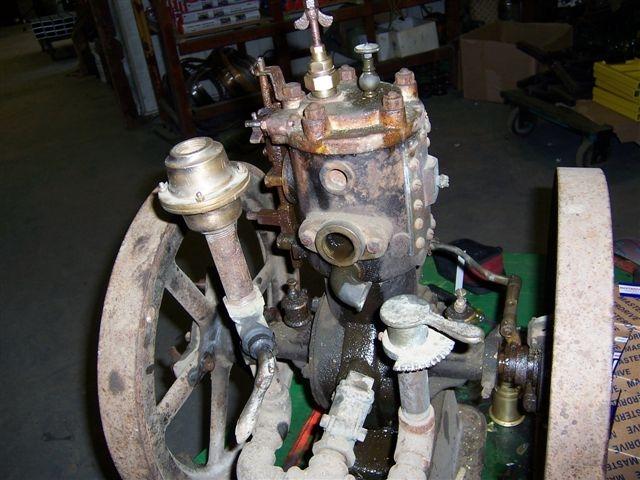
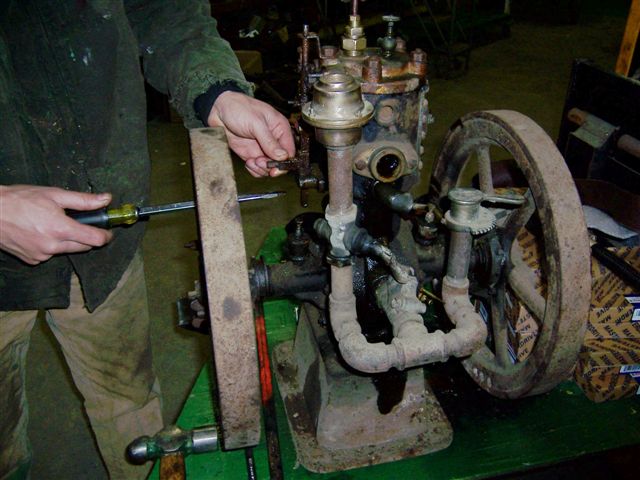
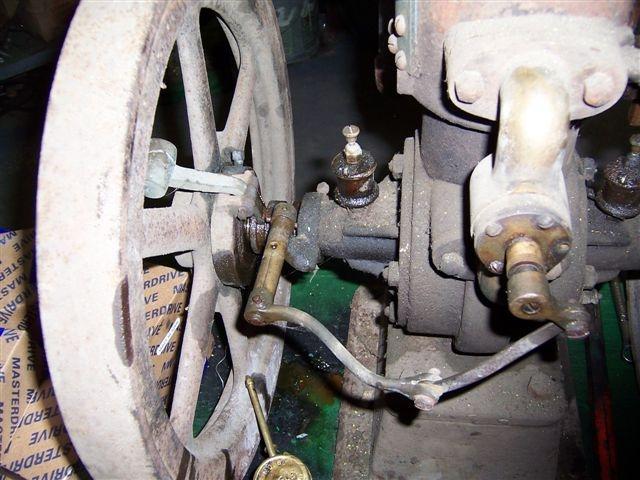
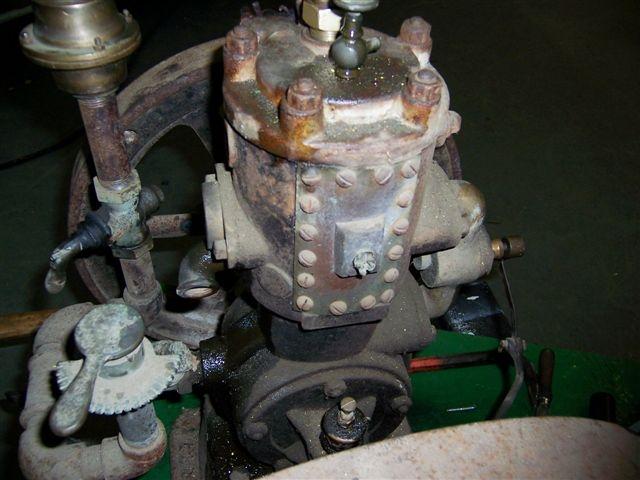
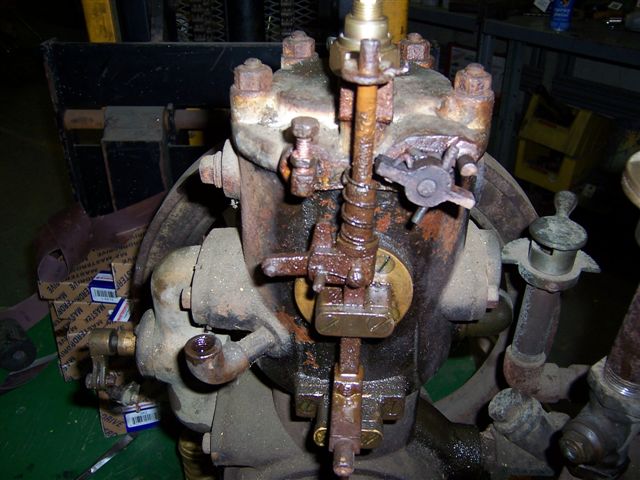 |
    
Ernie
Senior Member
Username: ernie
Post Number: 601
Registered: 01-2002

| | Posted on Tuesday, March 06, 2007 - 09:51 pm: | 




|
Doug,
I have the drawings you wanted. I will scan them and get them to you in the next day or so. |
    
Andrew Menkart
Moderator
Username: andrew
Post Number: 854
Registered: 11-2001

| | Posted on Tuesday, March 06, 2007 - 09:53 pm: | 




|
Fantastic engine!
This is from a 1901 catalog:
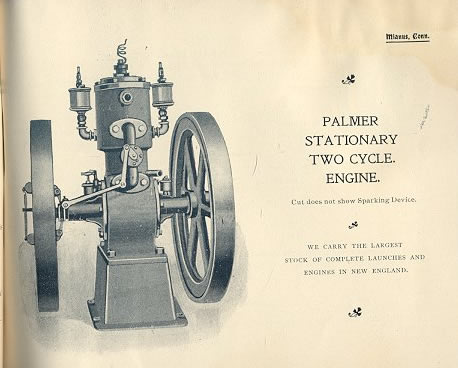 |
    
Andrew Menkart
Moderator
Username: andrew
Post Number: 855
Registered: 11-2001

| | Posted on Wednesday, March 07, 2007 - 09:05 am: | 




|
I am posting some of Dick Day's email comments about this... with his permission of course.
quote:Doug,
What a great find!!!
I am sending you several pictures of the Palmer Bros. Model they made from 1895-1900. Your engine is clearly of that period. My guess it it late rather than early as they seemed to have concentrated on marine engines for their first few years. The marine model engine was made in 1-1/2, 3, 5 and 7 hsp. If you give me a mailing address I will send you a brief pamphlet what I know about the marine model. In about 1901 Ray Palmer patented a cord wood saw rig with a similar model mounted on a wagon. The cooling tank was set up for thermo siphon hence no need for the marine water pump. The fuel tank was housed in the water tank and I wish Andrew would publish a close up of his remarkable model DS with its skid set up. (Not a wagon bed.) Battery box, gas and water tank set up.
Jewel of a find. The S added to the model letter signified Stationary engine. For practical purposes they are the same engine with separate trim like the fly ball governor and no water pump. Dual flywheels more along farm hit and miss engine style. The mixing valve was a typical swing check valve Palmer modified to act as a mixer. The early engines like this one have a butterfly in the transfer port which is the throttle controlled by the governor.
I have a model C that came from Ernie where the fly ball governor actually controls the lift on the mixing valve and the butterfly and bronze transfer pipe is no longer present as the transfer port is cast in the cylinder wall similar to your Model B.
Some of these engines are found with the marine flywheel on one end of the crankshaft and a hit and miss engine flywheel on the other end. I am not sure what the vertical pipe with strange brass fitting on the end is. My guess is it not factory and really a brass trim somebody added to the air intake. I also think that the whole intake piping is homemade with some on trying to accomplish the function of the Palmer mixing valve that got lost on the way to old age. I obviously could be wrong but I have never seen any Palmer document or engine that is even remotely similar. The petcock on the cylinder head should be a priming cup not petcock. That style petcock is very hard to find these days.
The igniter guide on the top of the cylinder should be a bronze casting.
The igniter guides are there and therefore the eccentric link to the igniter does not require the water pump barrel to guide the igniter.
Any idea of the bore and stroke of the engine???
We have the first Palmer ever made in our collection and it has the brass transfer port pipe with the butterfly in it. Raynal Bolling told me that Frank Palmer in 1940 had Ray get the first engine out of the basement of the office and restore it so they could take it to the boat shows. Ray said Frank told me that they didn’t have a clue how to throttle the engine so they added the butterfly and on the first engine that valve is there. Ray also said Frank told him they really never used it as their intake check/mixer worked just fine. Why they went on equipping the marine engines with that style transfer pipe I never did find out. There are at least three other surviving engines of the same model of the first engine.
and
quote:....with regard to his comments on icing in the mixer that was a common problem and it was solved early on by two simple fixes. First the typical mixer would have an approximately 6” long pipe nipple screwed into the inlet side to improve the “breathing” and a flexible metal pipe would be extended from an “Oven” around the exhaust pipe to offset the exothermic reaction from converting a liquid to a gas. Very early gasoline up until the case heading crude oil refining process came along about 1912/14 was much more volatile than later gasoline. The watermen considered the new gasoline not much better than kerosene. I have never had to add a heat pipe at shows but I do know the mixer valve can get very frosty on a hot summer day just idling at a show. I guess the bottom line is almost any carburetor would work on the early gasoline.
I have a copy of Stan first edition and quite honestly I don’t see any significant connection between it and this engine. I grant you the castings of the basic engine etc look like the drawings that were probably produced for the early assembly kits that Palmer Bros sold prior to 1900 for people looking to build their own engines. I have never seen one of those engines I should add. It may well be that this engine was connected up to city gas but it seems to me there would need to be some sort of rubber bellows that would equalize the pipe line pressure with the breathing of the engine. The photos you sent I also have and the linkage to the transfer port pipe are the clearly the same as on this engine.
To run on producer gas this set up conceivably could be used but I would want to study in real detail the brass “regulator and the control seen on the intake side of the engine. The rubber bellows would not be required but the gas producer would be an entirely separate set up. I would suggest the black oily drips would not be unrealistic if this engine was run for a long time on producer gas burning soft coal which was popular with blacksmiths for their forges.
I believe the patch on the cylinder is a repair nothing to do with the original manufacture.
I am very sorry Doug but I didn’t get your Palmer B in the 2005/6 annual listing of found Palmer engines. Will have to add it to the 2007 listing.
Regards, Dick
|
    
Andrew Menkart
Moderator
Username: andrew
Post Number: 856
Registered: 11-2001

| | Posted on Friday, March 09, 2007 - 11:16 am: | 




|
Also, Richard Durgee had previously posted pics from a 1902 catalog that shows the stationary model |
    
RichardDurgee
Senior Member
Username: richarddurgee
Post Number: 1445
Registered: 11-2001
| | Posted on Friday, March 09, 2007 - 11:33 am: | 




|
*
Palmer 1902 catalog cover, probably the first catalog in the new location at Cos Cob ?
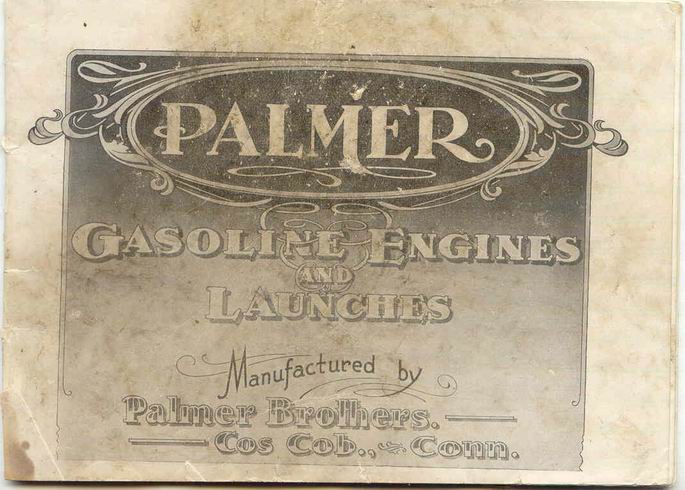
Palmer Sawing Machine 1902
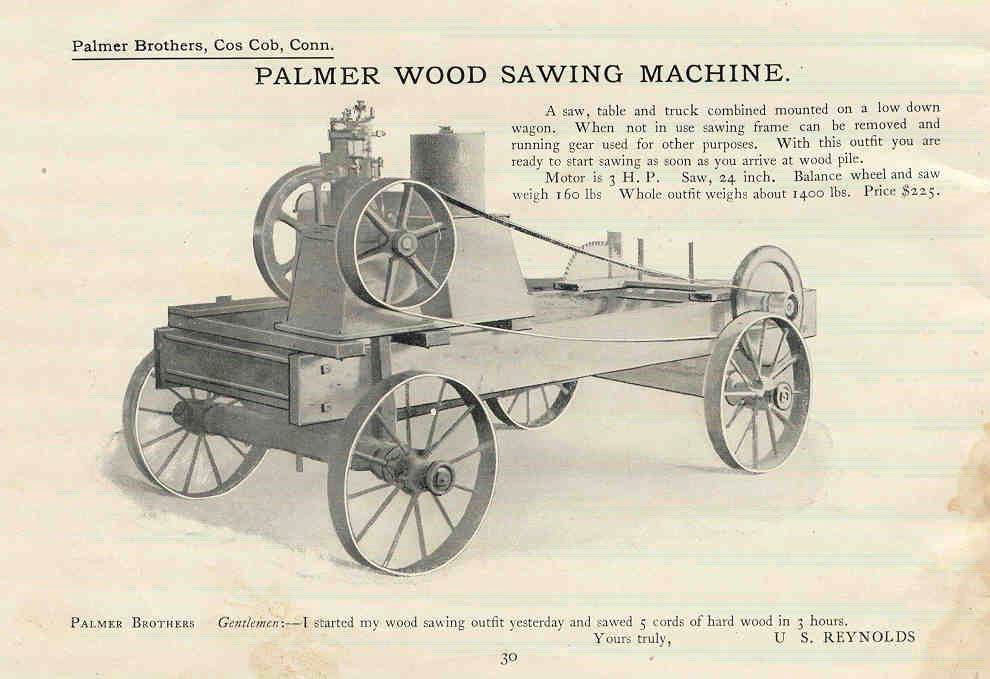
* |
    
John Drabik
Member
Username: john_drabik
Post Number: 21
Registered: 12-2005
| | Posted on Friday, March 09, 2007 - 03:22 pm: | 




|
Theres a vertical semi-identified engine photo posted in Enginads (under for sale) that says "Palmer?"
Looks to be similar in some, not all respects
I`d transfer the image here but Im not that talented. Take a look and see what you think. |
    
RichardDurgee
Senior Member
Username: richarddurgee
Post Number: 1447
Registered: 11-2001
| | Posted on Friday, March 09, 2007 - 03:48 pm: | 




|
*
Palmer ? On Engine Ads.
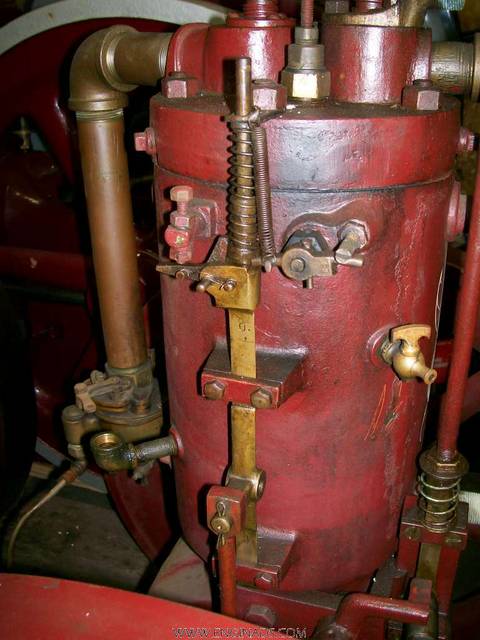
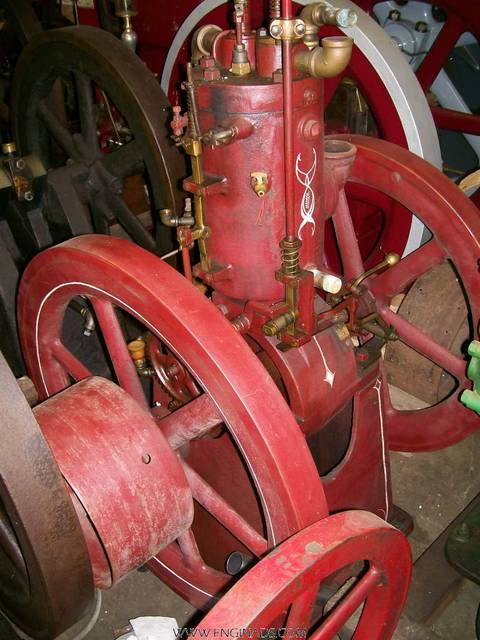
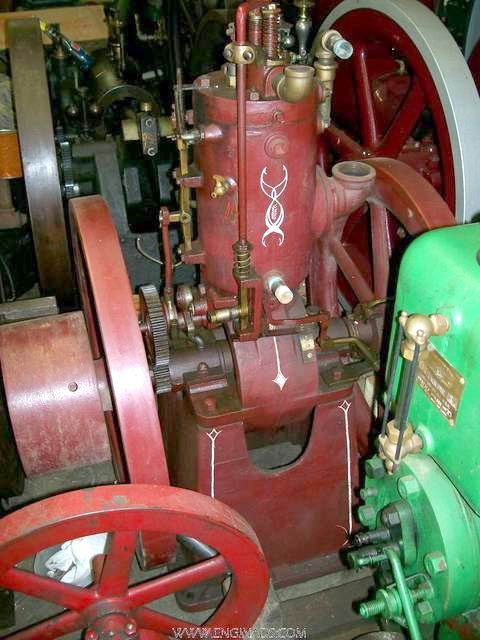
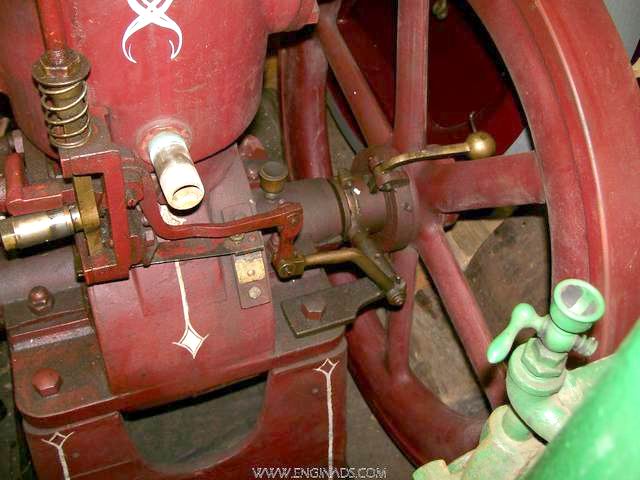
* |
    
Andrew Menkart
Moderator
Username: andrew
Post Number: 860
Registered: 11-2001

| | Posted on Friday, March 09, 2007 - 04:50 pm: | 




|
Dick Day sent the following from a poor copy of a 1913 Palmer catalog:
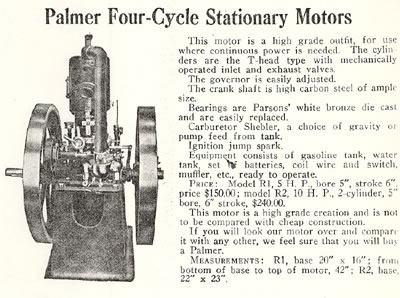 |
    
Tom Stranko
Senior Member
Username: thomas
Post Number: 264
Registered: 07-2002

| | Posted on Sunday, March 11, 2007 - 03:28 pm: | 




|
Scans to follow from my 1913 Palmer catalogue
(thanks for the nudge Dick)
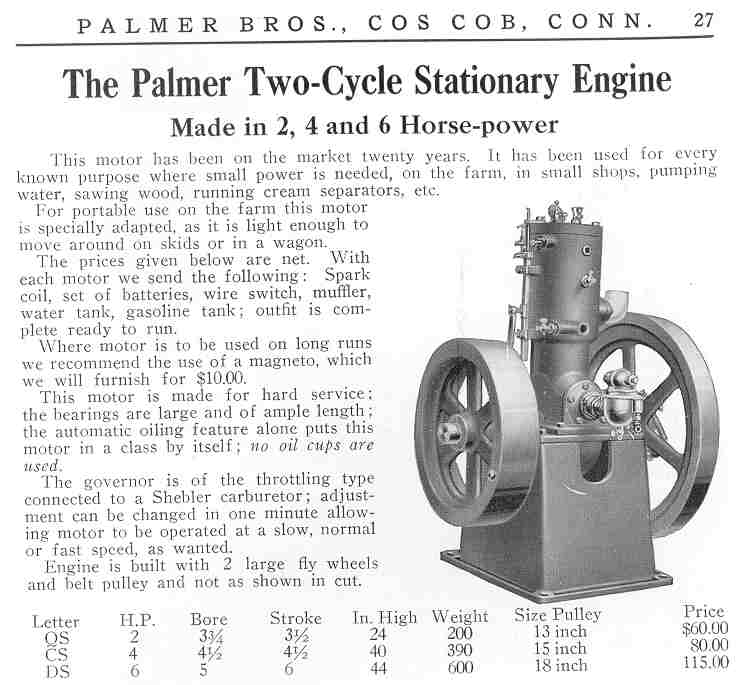
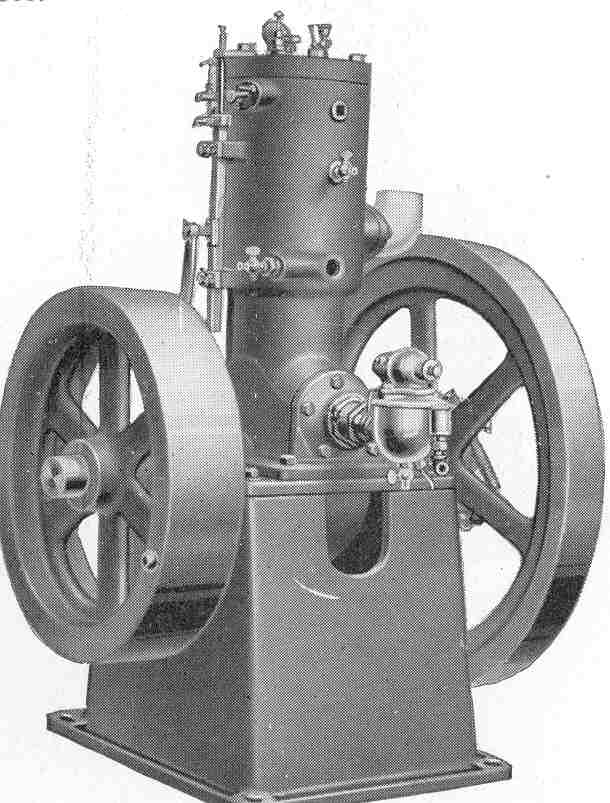
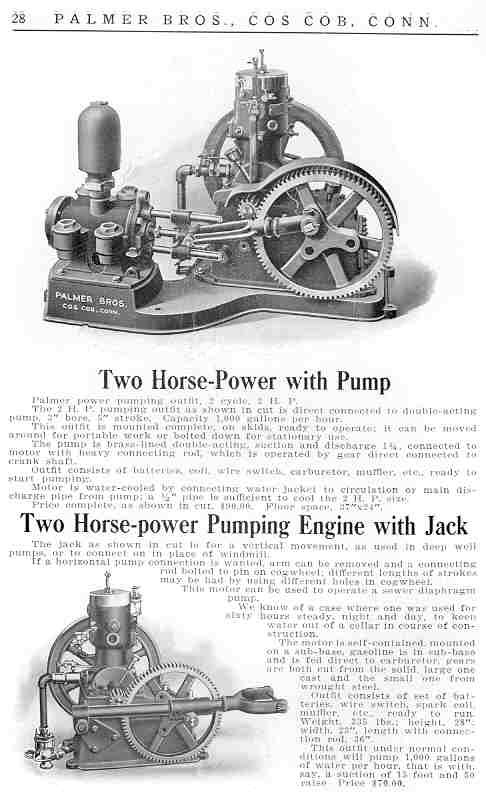
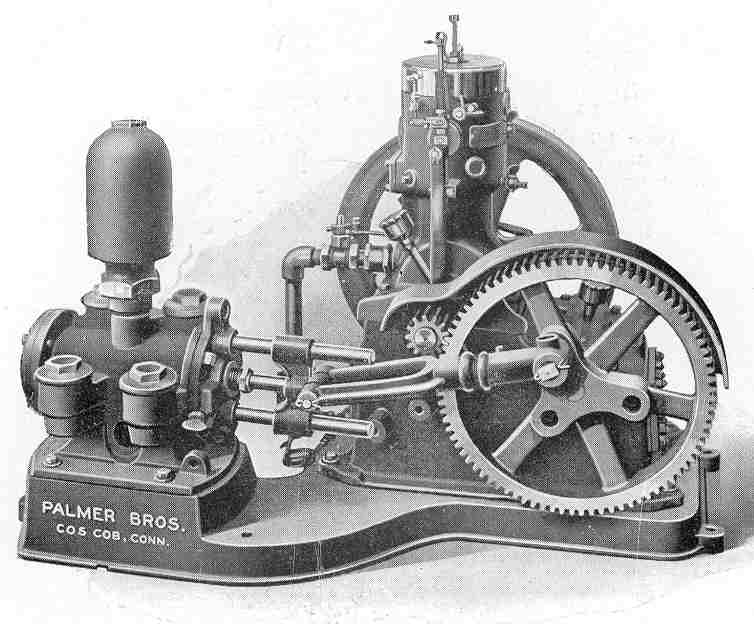
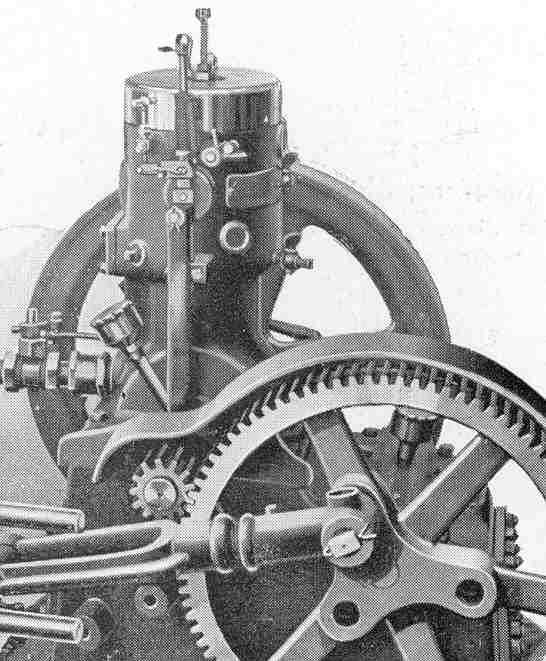
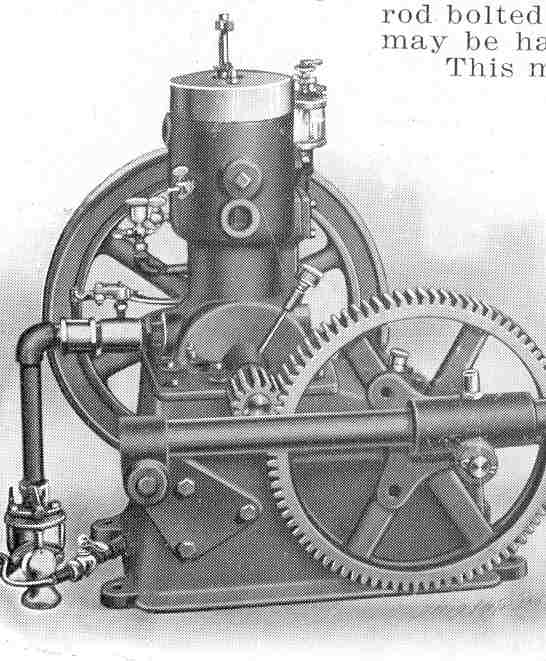
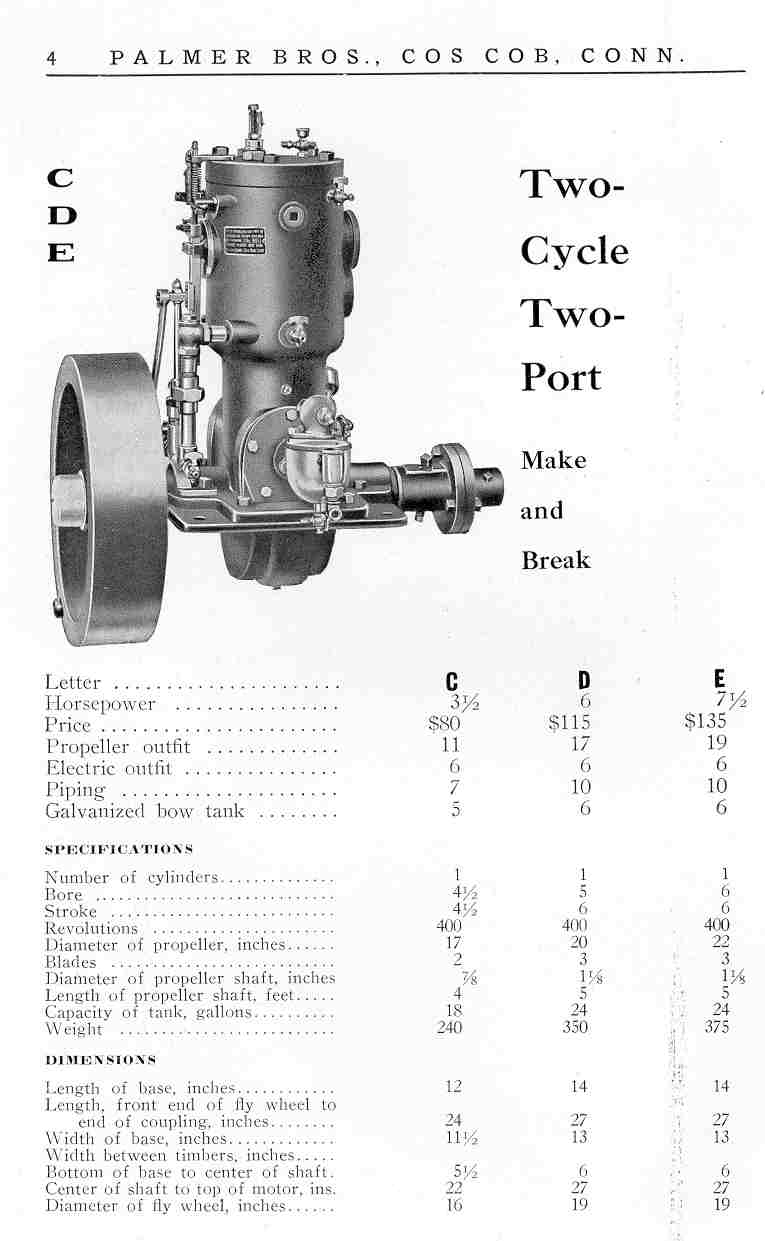
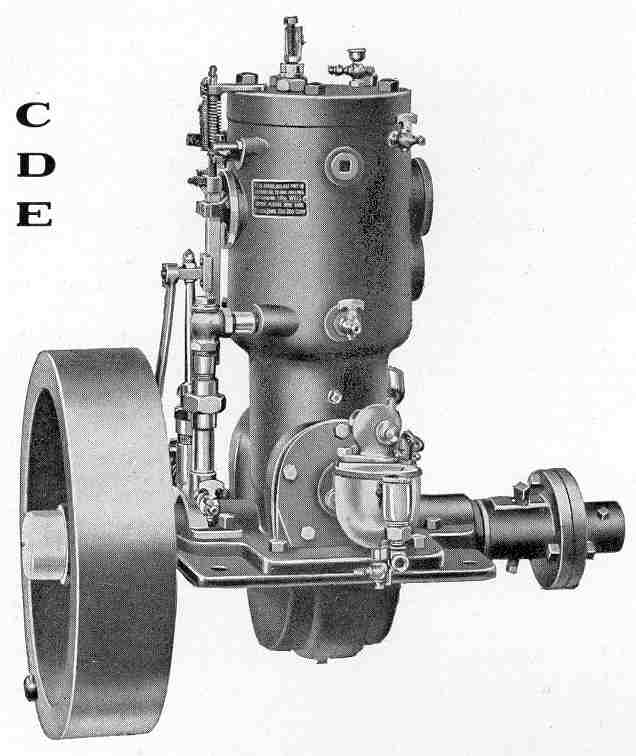 |
    
Tom Stranko
Senior Member
Username: thomas
Post Number: 265
Registered: 07-2002

| | Posted on Sunday, March 11, 2007 - 03:32 pm: | 




|
YIKES!! That didn't go the way I planned!
Maybe Andrew can straighten it out. |
    
Richard A. Day Jr.
Senior Member
Username: richardday
Post Number: 473
Registered: 11-2003

| | Posted on Sunday, March 11, 2007 - 04:36 pm: | 




|
Tom thats the two cycle we need the four cycle vertical. Dick |
    
Richard A. Day Jr.
Senior Member
Username: richardday
Post Number: 474
Registered: 11-2003

| | Posted on Sunday, March 11, 2007 - 04:46 pm: | 




|
Tom the four cycle is at the bottom of page 27 the two cycle is at the top of page 27. |
    
Tom Stranko
Senior Member
Username: thomas
Post Number: 266
Registered: 07-2002

| | Posted on Monday, March 12, 2007 - 08:08 pm: | 




|
At no time do my fingers leave my hands.....
I didn't see that the red engine was a 4 cycle.
Here is scan of what Dick was asking for |
    
Tom Stranko
Senior Member
Username: thomas
Post Number: 267
Registered: 07-2002

| | Posted on Monday, March 12, 2007 - 08:09 pm: | 




|
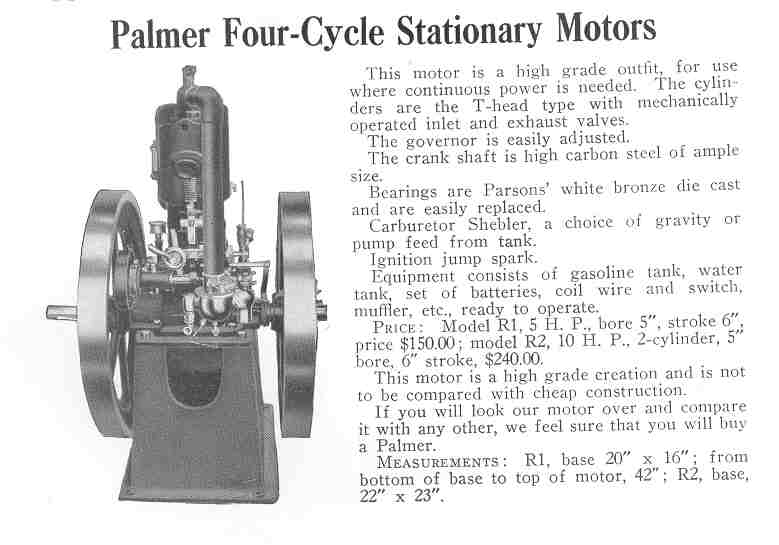 |
    
Tom Stranko
Senior Member
Username: thomas
Post Number: 268
Registered: 07-2002

| | Posted on Monday, March 12, 2007 - 08:11 pm: | 




|
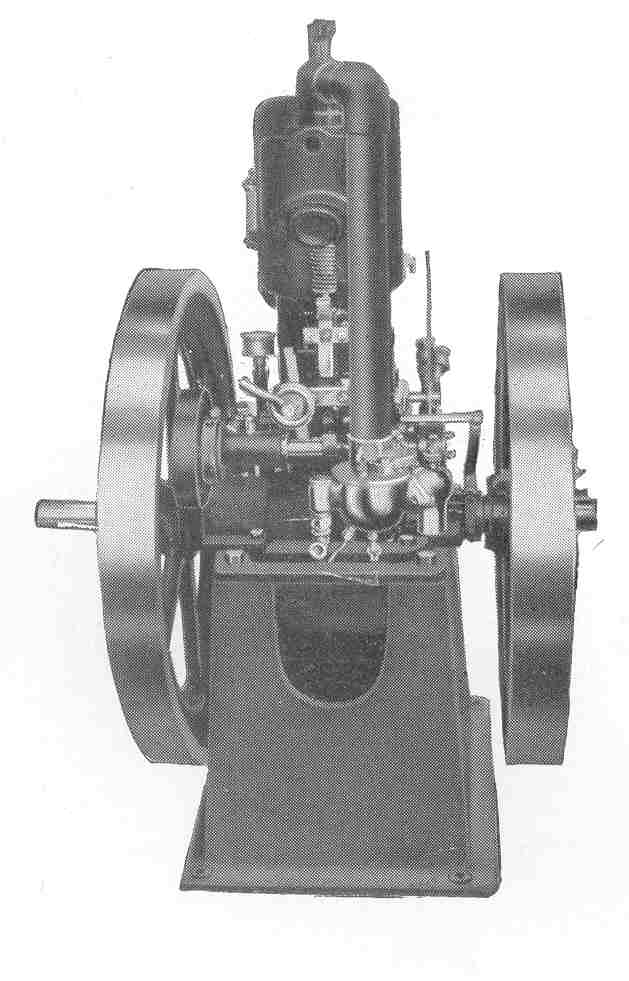 |
    
Richard A. Day Jr.
Senior Member
Username: richardday
Post Number: 476
Registered: 11-2003

| | Posted on Monday, March 12, 2007 - 09:25 pm: | 




|
Thanks Tom, That is the engine on e-bay. |
    
Richard A. Day Jr.
Senior Member
Username: richardday
Post Number: 477
Registered: 11-2003

| | Posted on Monday, March 12, 2007 - 09:30 pm: | 




|
I left off this one has the mechanical intake valve but the rest of it is Palmer and must be a later version. |
    
Jon Rozevink
Visitor
| | Posted on Monday, March 12, 2007 - 09:58 pm: | 




|
Hi
I own the Red engine in the pictures. It is a 4 cycle with an open crankcase but I don't know if you can see that in the pictures. I would be interested to know what year it might be. I think it is earlier than the ones in the Wendel book |
    
Richard A. Day Jr.
Senior Member
Username: richardday
Post Number: 478
Registered: 11-2003

| | Posted on Tuesday, March 13, 2007 - 10:36 am: | 




|
In my opinion it has the appearance of the a cylinder developed for the Model C two stroke which came out in 1900. It however has the atmospheric intak valve of the model L and M which came along about 1907. It has the camshaft drive set up of the Model R of 1908/9. It has not progressed to the Models NL or NR of 1912 as those shown in Wendel. So it in my opinion a classic example of Palmer cut and paste as they went along developing their marine engine line but adapting those designs for stationary hit and miss applications. The igniter routine adjustment handle to advanc and retard the spark would not be needed in a hit and miss engine in fact it would probably confuse the new owner hence the cap screw with lock nut as once set there would be no reason to change the setting unless for wear reasons it needed to be reset. This engine would not be set for direct reverse as in a two stroke in a boat. My guess is this engine is in the period where Palmer Bros. were trying to get a good four stroke design for marine engines and recognizing the hey day of the big two stroke gasoline marine engine was really coming to an end in favour of four stroke marine engines. This was due to their better fuel efficiancy and better performance with less attention. My guess is it is in the period 1909/10. The remarkable change with their 1912 T head closed crankcase, enclosed cam shafts, oil pump and baffled oil sump under each crank in the multiple cylinder versions of the NL/NR lived on in the ZR series of 1925 and in the ZR-1 until 1962. The base by the way is a classic Palmer base and probably a dozen or more other makers so that doesn't help much in dating.
It is a very interesting engine and the only one I have ever seen. John Ledbetter has a very nice NRS-2 which is simalar to the single stationaries in Wendel. S added to the Palmer Model number simply meant Stationary. 2 means two cylinder. |


